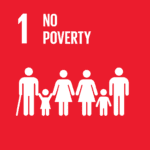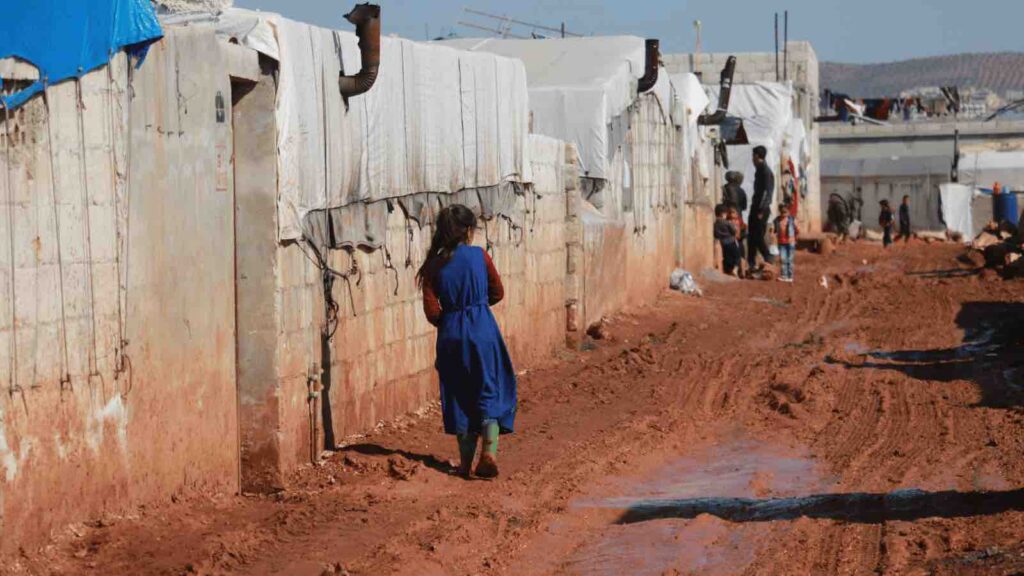Poverty, gender inequality are key factors, study finds. Reaching the global SDG target to end child marriage by 2030 will only be possible if progress to eliminate this harmful practice is accelerated.
In a world grappling with the escalating impacts of climate change, researchers have unveiled a rarely discussed, yet deeply concerning consequence: an increase in child marriages, particularly in low- and middle-income nations.
RELEVANT SUSTAINABLE GOALS



Association between child, early, and forced marriage and extreme weather events By The Ohio State University
A comprehensive review of 20 pivotal studies, spearheaded by Fiona Doherty, a doctoral candidate in social work at The Ohio State University, suggests that extreme weather phenomena, including droughts and floods, correlate with a surge in child, early, and forced marriages.
Published in the esteemed journal International Social Work, the investigation underscores a daunting global statistic: 20% of girls worldwide are wed before turning 18. This figure is even more staggering in lower- and middle-income countries, where it reaches 40%. Alarmingly, as climate change accelerates the frequency and severity of extreme weather events, this percentage is predicted to rise, warns Smitha Rao, an assistant professor of social work at Ohio State and co-author of the study.
The meticulous analysis encompassed studies spanning from 1990 to 2022, predominantly conducted in countries across Asia and Africa, like India, Bangladesh, Kenya, and Vietnam. Disasters like droughts and floods dominated, but the implications of cyclones and temperature shocks were also reviewed.
In the studies, the circumstances varied, but the narrative was unmistakably clear. Doherty referenced one particular research effort in Bangladesh, which highlighted that during prolonged heatwaves—lasting over a month—girls between 11 and 14 were 50% more susceptible to early marriage. For those between 15 and 17, the likelihood was 30% higher.
The core reason? Economic imperatives
Doherty elaborated, “Families view child marriage as a tactical response to alleviate financial stress and mitigate food scarcity that typically follows a disaster.” This sentiment was echoed in a report detailing the aftermath of Cyclone Aila in Bangladesh, where marrying off young daughters alleviated the economic strain on households.
Furthermore, regional customs, notably bride price and dowry, further intertwine the complexities of child marriage and climate-induced disasters. For instance, in areas like sub-Saharan Africa, where the groom’s family compensates the bride’s, girls faced heightened risks of being coerced into matrimony during droughts or excessive rain. Conversely, in regions like India where dowries prevail, financial constraints during drought years meant reduced instances of child marriage due to the inability to afford the groom’s price.
Yet, beyond mere economics, other repercussions emanate from climate calamities. Displaced communities, left vulnerable post-disasters, often relocate to camps, where young girls become targets for sexual violence and harassment. Rao remarked, “In such harrowing contexts, families occasionally perceive early marriage as a shield against potential threats to their daughters.”
Amid these stark findings, there was a beacon of hope: education. Girls receiving education were notably less likely to be prematurely married. Similarly, increased parental education consistently resulted in reduced instances of early wedlock for daughters.
While championing education remains vital, both Doherty and Rao emphasize the urgency of broader measures, including establishing stringent laws against child marriage and providing economic support to vulnerable families. However, Doherty pointedly stated, “The primary accelerator of child marriage is gender inequality. Empowering women and girls, providing education, and granting financial independence are paramount.”
While the studies scrutinized were confined to low- and middle-income countries, the researchers conjecture that climate disasters could also be amplifying child marriages in affluent nations, including the U.S. Rao pressed on the need for more expansive research to fathom this possible connection.
At the current pace, the world is at least 300 years away from ending child marriages (Source : UNICEF, 2023) . The Global target cannot be achieved until child marriage is eliminated in all parts of the world.
You may also be interested in :
Asia’s Persistent Gender Gap : An Unsettling 189-Year Journey To Parity


